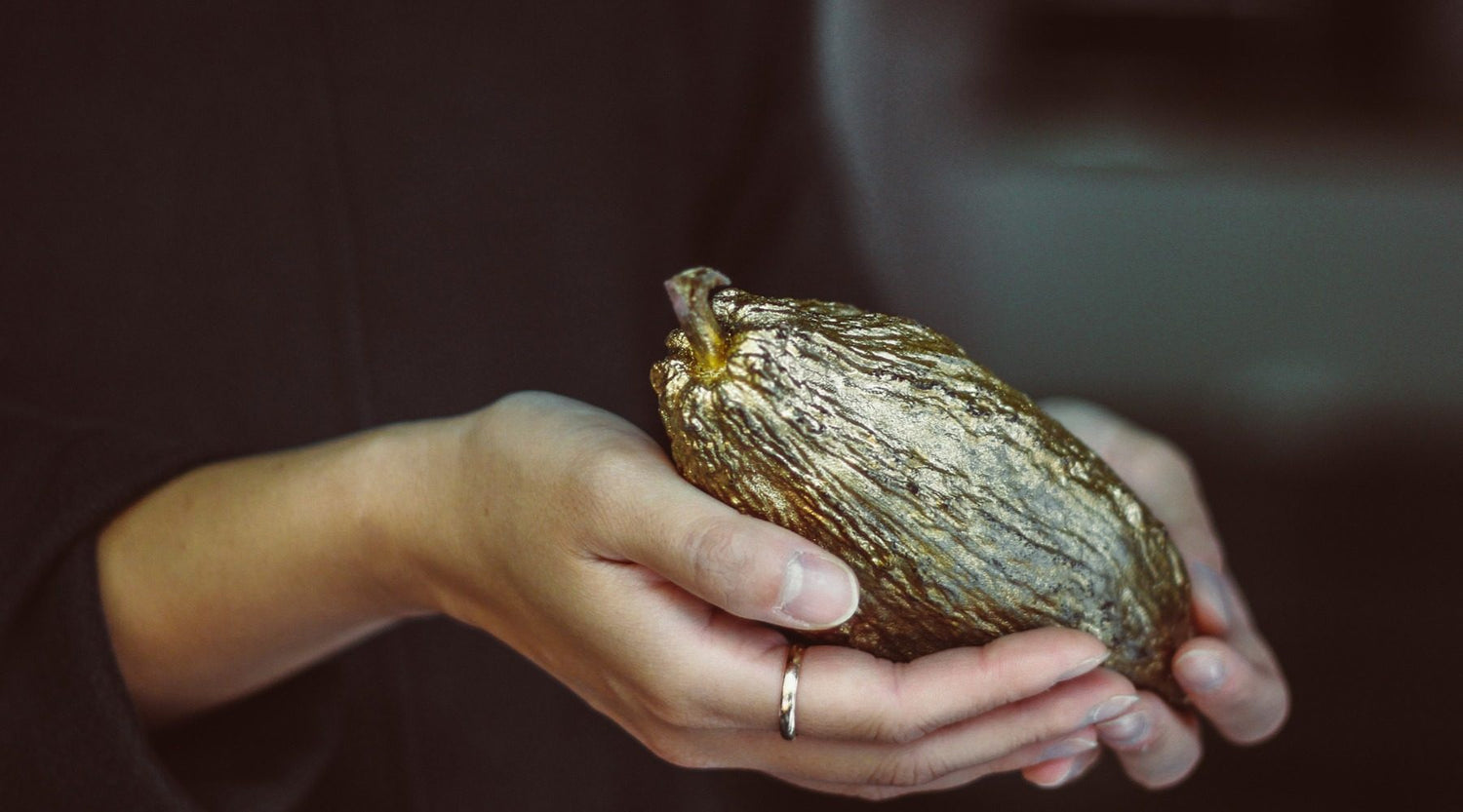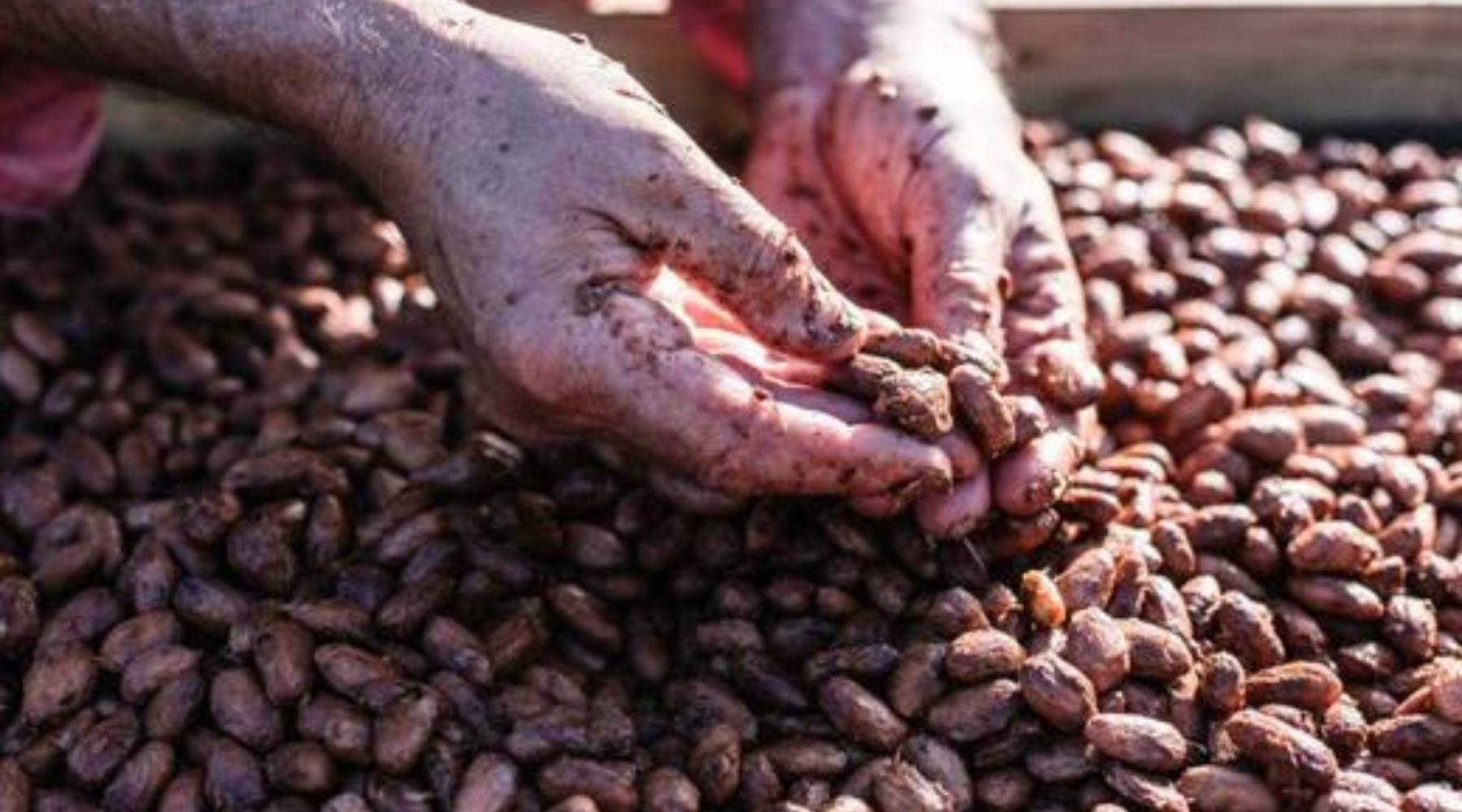There are many myths and misconceptions about the benefits of raw chocolate. Raw chocolate is increasingly being offered in organic shops and supermarkets. And you've probably already heard about the superfood potential. But is raw chocolate really that healthy? And what does raw actually mean in this context? We have put together the most important facts for you.
To make raw cocoa, raw nibs or raw chocolate, cocoa beans are fermented. For this purpose, they are usually placed in wooden boxes - surrounded by banana leaves - where the cocoa beans are then fermented. During the fermentation process, bacteria, yeasts and other microorganisms break down the sugar from the cocoa bean pulp and react with it. The fermentation process is a natural step in making chocolate. It is deliberately controlled by chocolate manufacturers and farmers to emphasize certain aromas and achieve taste profiles.
Many experts go even further: if the cocoa beans were never warmer than 48°C during processing, they would probably be inedible. If you have ever taken part in one of our tastings , then you know that chocolate has tannic flavors. These are largely broken down in the fermentation process and only partially preserved in order to get a well-rounded taste profile. Without fermentation, a very bitter product would be created that you would not want to consume as nibs or chocolate.
What is sold as raw chocolate or raw cocoa has most likely exceeded the 48°C mark several times - even with a lot of effort on the part of the manufacturer. Greg from Dandelion Chocolate gets to the heart of another tricky point about raw chocolate. “A primary goal of fermentation is to kill the cacao seed. Once fermented, there are no viable seeds left and it can no longer sprout. So there is nothing “raw” about a fermented cocoa bean anymore.
So instead of selling chocolate under the “raw” label, we would like to further establish the term “unroasted”. Even if it is perhaps a bit bulkier and less trendy. So, at its core, it usually hits home what is really meant.
You can of course find lots of chocolate made from roasted – and a few from unroasted – beans in our shop !
Raw or not raw – that is the question
The term “raw” or “raw” suggests that the chocolate or nibs on offer are natural. But it's not quite that simple, because all raw chocolate products are always processed in one way or another. Sound confusing? It is.To make raw cocoa, raw nibs or raw chocolate, cocoa beans are fermented. For this purpose, they are usually placed in wooden boxes - surrounded by banana leaves - where the cocoa beans are then fermented. During the fermentation process, bacteria, yeasts and other microorganisms break down the sugar from the cocoa bean pulp and react with it. The fermentation process is a natural step in making chocolate. It is deliberately controlled by chocolate manufacturers and farmers to emphasize certain aromas and achieve taste profiles.
Raw chocolate: the temperature matters
Raw food advocates consider food to be “raw” if it is not heated above 48°C. If you are one of these people, unfortunately you have to be strong now ;-) We have read many chocolate books and blogs for you and asked experts. Everyone pretty much agrees: When producing cocoa nibs and chocolate, the “raw” temperature of 48°C is regularly exceeded. This means that it is often exceeded during fermentation and drying and cannot really be controlled. Even during grinding and pressing, higher temperatures naturally arise due to friction.Many experts go even further: if the cocoa beans were never warmer than 48°C during processing, they would probably be inedible. If you have ever taken part in one of our tastings , then you know that chocolate has tannic flavors. These are largely broken down in the fermentation process and only partially preserved in order to get a well-rounded taste profile. Without fermentation, a very bitter product would be created that you would not want to consume as nibs or chocolate.
Raw vs Unroasted
Our friends and chocolate maker 'Raaka' from New York get to the point. Instead of calling their chocolate “raw”, they use the term “unroasted”. We think: great idea! Because what most people – apart from strict raw food supporters – mean by raw cocoa or chocolate is actually not “raw” but rather unroasted. That's why Nate from Raaka makes the following distinction: “The cocoa beans for Raaka chocolate are fermented and dried, but not roasted. In contrast, only unfermented cocoa beans are truly raw.”What is sold as raw chocolate or raw cocoa has most likely exceeded the 48°C mark several times - even with a lot of effort on the part of the manufacturer. Greg from Dandelion Chocolate gets to the heart of another tricky point about raw chocolate. “A primary goal of fermentation is to kill the cacao seed. Once fermented, there are no viable seeds left and it can no longer sprout. So there is nothing “raw” about a fermented cocoa bean anymore.
So instead of selling chocolate under the “raw” label, we would like to further establish the term “unroasted”. Even if it is perhaps a bit bulkier and less trendy. So, at its core, it usually hits home what is really meant.
You can of course find lots of chocolate made from roasted – and a few from unroasted – beans in our shop !



